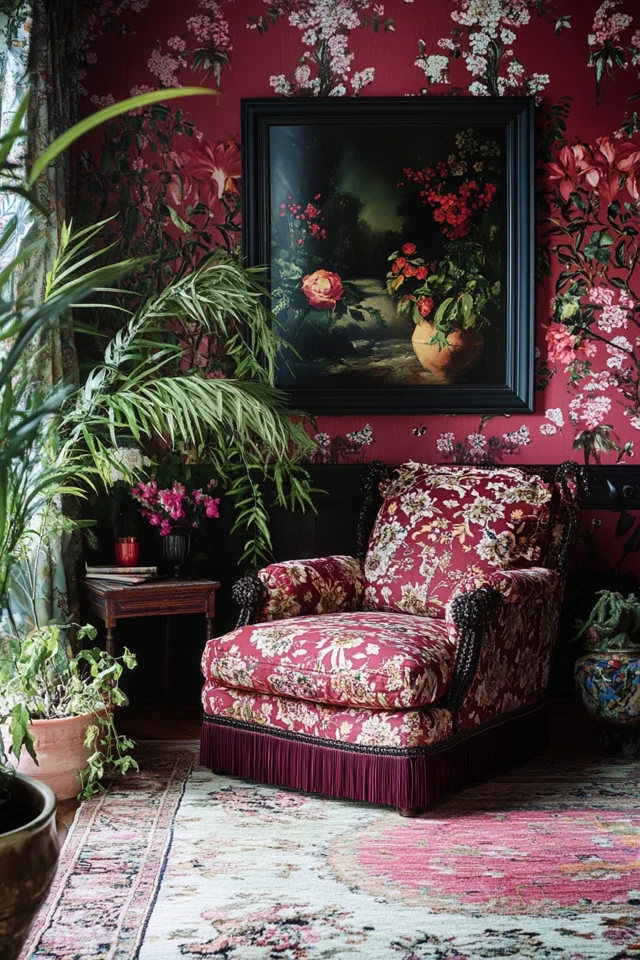Introduction
I’ll never forget the first time I fell in love with bohemian design. I was a college student on a tight budget, attempting to decorate my tiny, sunlit apartment. My roommate came home one day with a bright, floral rug she found on sale. I panicked. At that point, the only other “statement piece” in our space was a throw blanket with bold geometric patterns. “How are we going to make this work?” I asked nervously. She shrugged, threw the rug down, and casually layered the blanket on the couch. To my surprise, it did work—and in the most fabulous way. That happy accident taught me one of my first design lessons: sometimes, breaking the rules creates the magic.
Fast forward to today, I’ve had years to refine that chaos into a method. Bohemian design is about freedom, self-expression, and a little bit of whimsy—and few things embody those principles more than mixing prints. From floral to ikat, paisley to stripes, the world of patterns offers endless possibilities to create a layered, inviting space. But it’s not always as simple as throwing things together. You’ve got to strike that balance between eclectic and overwhelming.
In this ultimate guide, I’ll take you through everything I’ve learned—both from my early mistakes and professional experience—about mixing prints in bohemian design. We’ll dive into the rules (and when to break them), explore color theory, and discover practical tips to achieve that effortlessly chic boho vibe. Whether you’re starting with a blank canvas or working with a mix of inherited treasures, this guide is here to help you turn your space into a personal sanctuary.
Understanding the Basics of Bohemian Design
Bohemian design is all about embracing individuality. Originating from the bohemian lifestyle of artists and creatives in the 19th century, this aesthetic rejects rigid rules in favor of layering colors, textures, and, yes, patterns. While boho style often feels spontaneous, there’s a subtle art behind making it look cohesive rather than chaotic.
Key Characteristics of Boho Design
- Eclectic Layers: Think of your space as a tapestry of memories. Vintage finds, handmade pieces, and global influences are the hallmark of bohemian interiors.
- Natural Materials: Textures like rattan, jute, and wood provide a grounding element amidst the riot of colors and prints.
- Global Patterns: From Moroccan tiles to Indian block prints, bohemian design borrows liberally from world cultures.
- A Relaxed Vibe: Boho spaces are cozy, inviting, and often a little imperfect—just like life.
By incorporating mixed prints into these principles, you can enhance the eclectic charm without losing harmony.
The Science Behind Mixing Prints
Mixing prints might feel intuitive for some, but understanding a few foundational principles will set you up for success.
Start with a Color Palette
One of the easiest ways to mix prints is by sticking to a cohesive color palette. For example:
- Neutral Base: Shades of white, cream, and beige serve as a calming backdrop.
- Accent Colors: Choose 2-3 bold colors to tie your patterns together. For instance, jewel tones like emerald and sapphire work beautifully in bohemian spaces.
Pro Tip: Use a color wheel! Complimentary colors (opposites on the wheel) add vibrancy, while analogous colors (neighbors on the wheel) create harmony.
Balance Scale and Proportion
The trick to mixing prints is balancing their scale:
- Pair a large-scale pattern (like oversized florals) with a small-scale print (like polka dots or fine stripes).
- Avoid combining two competing patterns of the same size; they’ll fight for attention.
Texture Matters
Prints aren’t just about visuals—they’re also about feel. Pair a smooth, silky textile with a chunky woven one to add depth. A patterned velvet pillow, for instance, pairs wonderfully with a fringed cotton throw.
Tips for Mixing Prints in Bohemian Interiors
1. Layer Rugs for Instant Drama
Layering rugs is one of the most popular ways to experiment with mixed prints in bohemian spaces. Start with a large, neutral jute rug, then add a smaller, patterned rug on top. Moroccan Beni Ourain rugs, Turkish kilims, and tribal prints are all great options.
2. Master the Pillow Game
Throw pillows are a low-stakes way to test your pattern-mixing skills. Group them in odd numbers (three or five), combining a mix of stripes, florals, and geometric prints. Ensure one or two colors tie the prints together for cohesion.
3. Add Patterns Through Art
Wall art is a great way to incorporate prints without overwhelming the room. A gallery wall featuring a mix of botanical prints, abstract paintings, and patterned textiles creates a boho-inspired focal point.
4. Experiment with Upholstery
For the adventurous, reupholstering a chair or ottoman in a bold print can make a statement. If you’re hesitant, start with slipcovers—they’re easy to change if you tire of the look.
5. Don’t Forget the Ceiling
Ceilings are often overlooked in design, but they’re a perfect canvas for mixing prints. Consider a patterned wallpaper or hand-painted stencil design for a playful, unexpected touch.
Picture Gallery
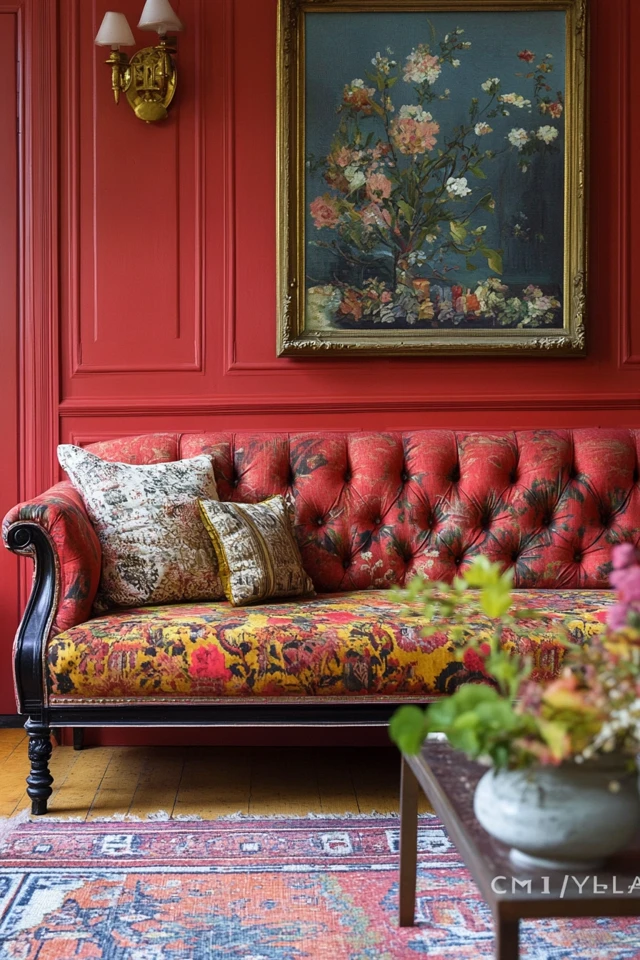
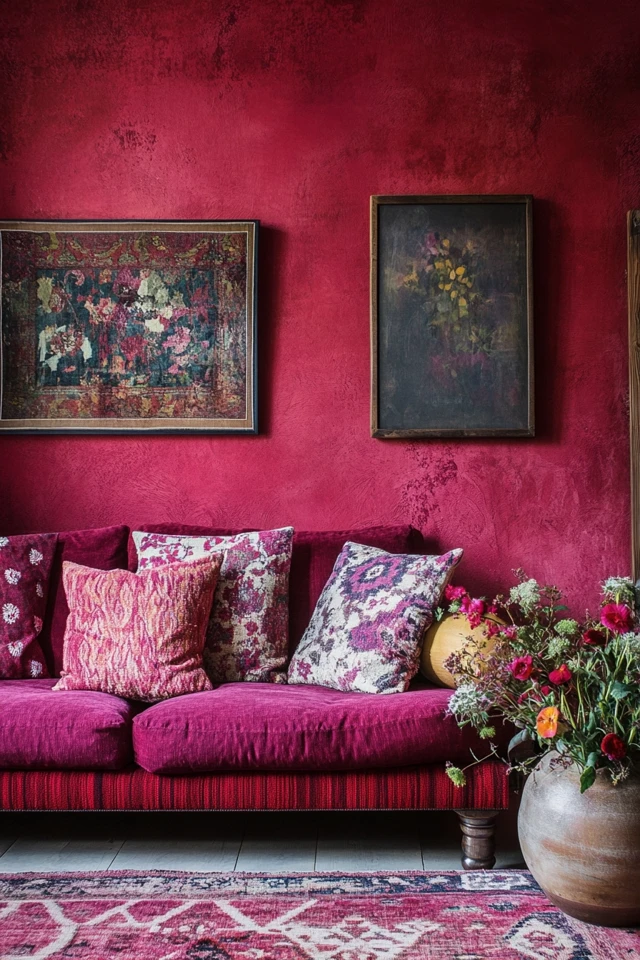
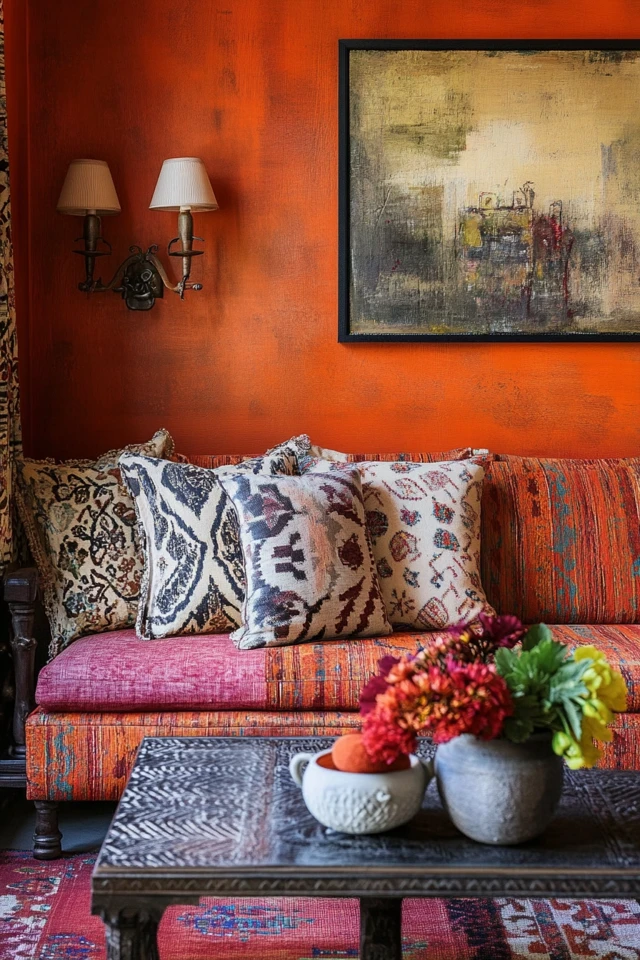
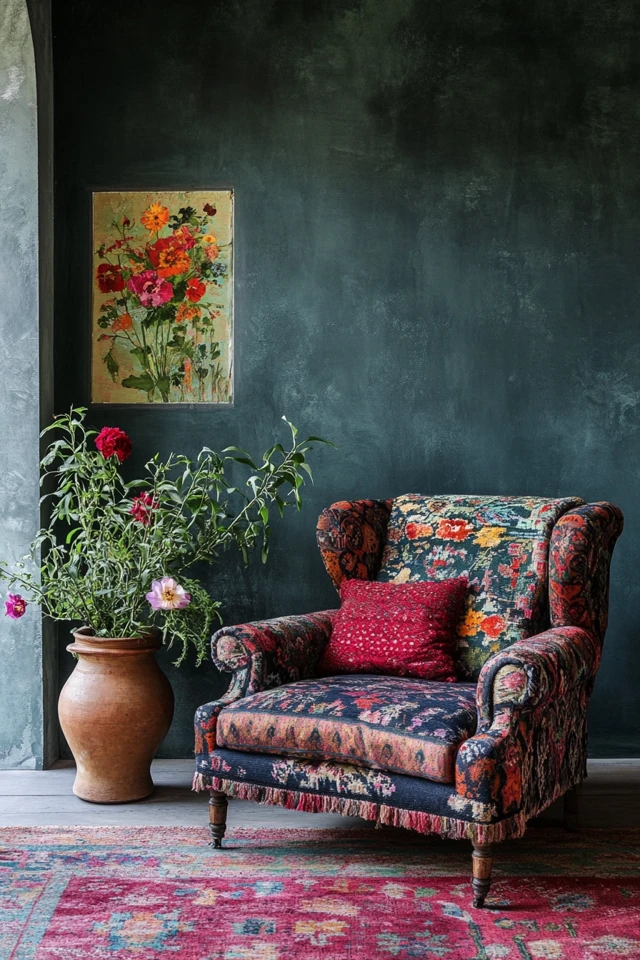
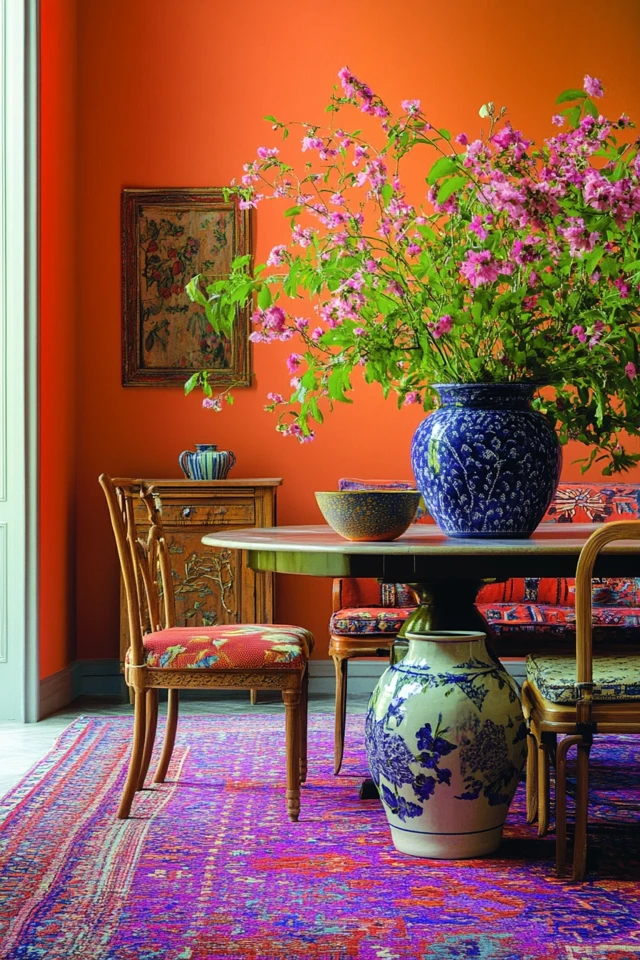
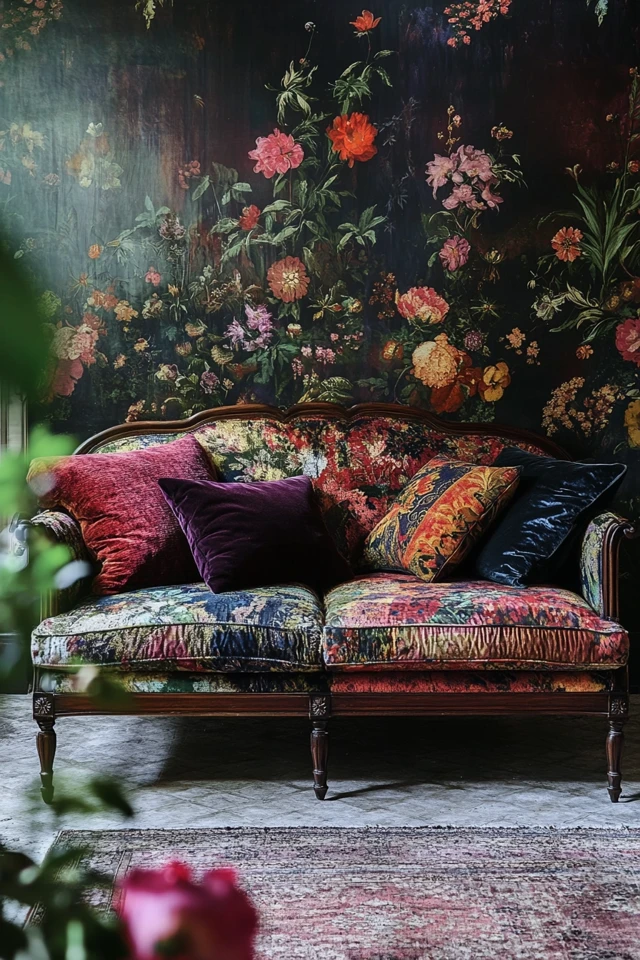
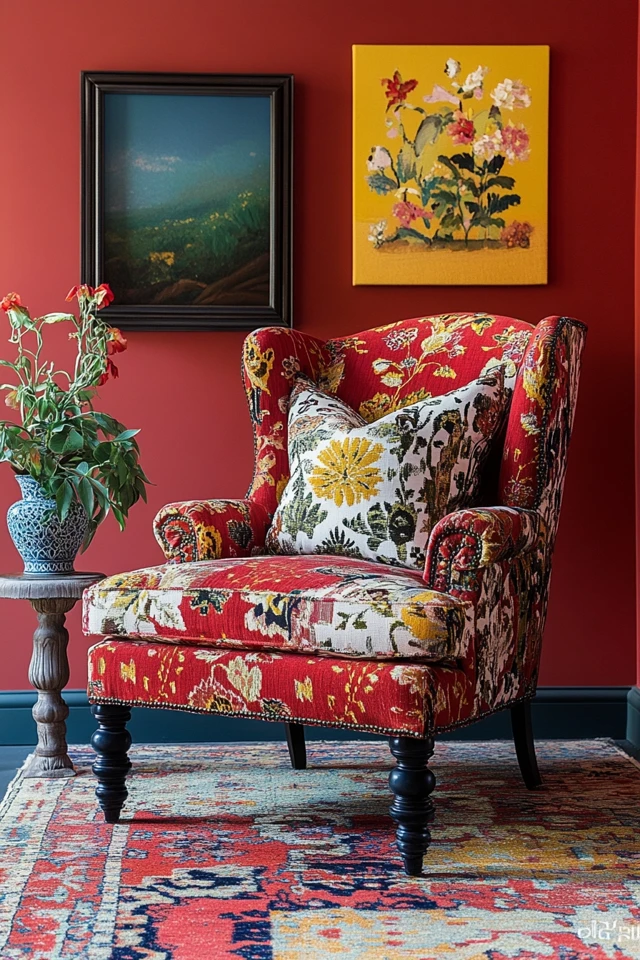
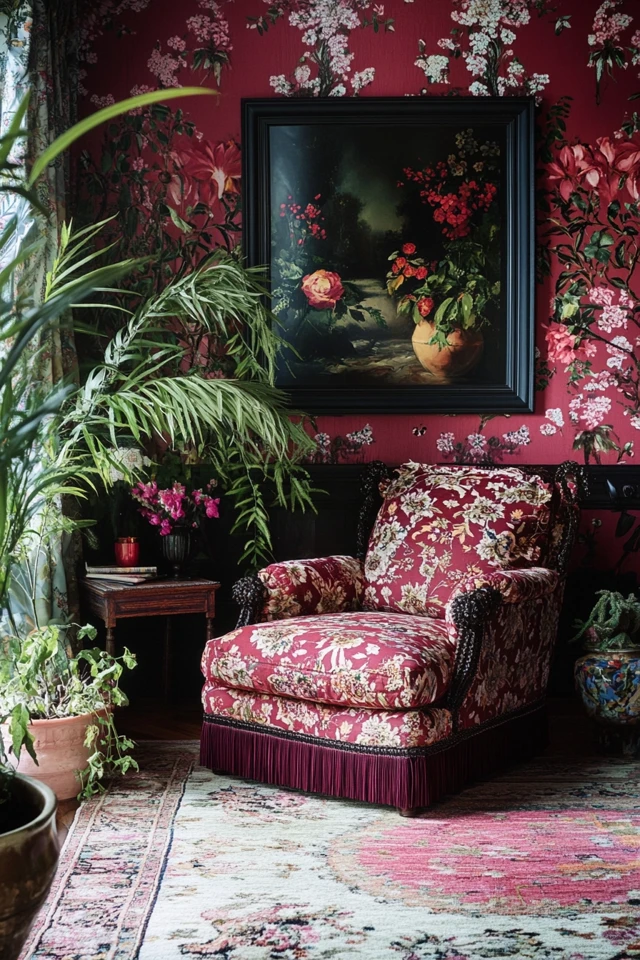
Mistakes to Avoid When Mixing Prints
Even with bohemian design’s emphasis on rule-breaking, some pitfalls can derail your vision.
1. Too Many Clashing Colors
While bohemian style celebrates color, too many clashing hues can feel chaotic. Stick to your chosen palette to maintain balance.
2. Ignoring Negative Space
Empty space is your friend! Without it, your patterns may feel overwhelming. Use solid-colored furniture or accessories to give the eye a place to rest.
3. Overloading on Trends
Trendy prints like chevron or tropical motifs can date your space quickly. Instead, opt for timeless patterns with cultural or personal significance.
Where to Shop for Bohemian Prints
Finding the right patterns for your space often means hunting for unique pieces. Here are my go-to sources:
- Thrift Stores: Vintage finds often come with built-in character.
- Etsy: For handmade, globally-inspired textiles and prints.
- High-End Retailers: Brands like Anthropologie or West Elm offer bohemian-inspired decor.
- DIY: Block printing your own fabrics is a creative and customizable way to add patterns.
Conclusion
Mixing prints in bohemian design is as much about intuition as it is about technique. It’s an art form that requires confidence, creativity, and a willingness to experiment. I’ve learned this firsthand through years of trial and error—and countless throw pillows! The beauty of boho style is that it celebrates imperfections, individuality, and a little bit of chaos.
So, whether you’re layering Moroccan rugs, combining paisley and ikat, or showcasing vintage floral upholstery, remember this: bohemian design is about creating a space that feels like you. Let your instincts guide you, embrace the unexpected, and don’t be afraid to break the “rules.” Because at the end of the day, the most beautiful spaces are the ones that tell a story—and there’s no better storyteller than you.
Now, grab that bold-patterned throw you’ve been eyeing, layer it over your favorite striped chair, and watch the magic happen.
FAQ
1. What colors work best for mixing prints in bohemian design?
Rich jewel tones, earthy neutrals, and warm hues like terracotta and mustard are staples of bohemian palettes. Stick to 2-3 main colors to maintain harmony.
2. Can I mix modern and traditional prints?
Absolutely! Mixing modern geometrics with traditional motifs like paisley adds depth and character to a boho space.
3. How can I avoid a cluttered look when mixing prints?
Balance is key. Use solid-colored elements to create negative space, and stick to a cohesive color palette to unify your patterns.
4. What’s the easiest way to start mixing prints?
Start small with throw pillows or a gallery wall. These elements are easy to switch out and help you experiment without commitment.
5. Where can I find affordable boho-inspired prints?
Thrift stores, Etsy, and DIY block printing are great sources for unique, budget-friendly patterns.

